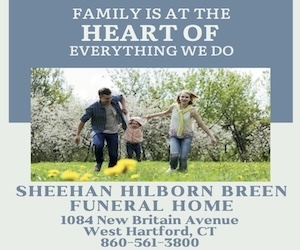
By Alyssa R. Norwood
I walked slowly into my synagogue for Kol Nidre services. I was supporting my 96-year-old grandmother on one arm and holding the hand of my then two-year-old daughter (the youngest of our three children) with the other. I was flush with the joy of four generations of family, together on the cusp of the spiritual climax of the Jewish calendar, feeling transcendent.
The sanctuary was bathed in white, the color customarily worn on Yom Kippur, symbolic of the purity for which we strive on this Day of Atonement. But at its core, Yom Kippur is about imitating death – not eating, drinking, or otherwise attending to our bodies – as a conduit to powerfully affirming life.
I watched members of our congregation remove all the Torah scrolls from the Ark, gently cradling each one. Amidst this moving pageantry, I had a vision of myself holding a baby the following year.
The next month, I found out that I was pregnant – and my husband and I were overjoyed. Each one of our three children has been an abounding source of love and spiritual teaching. Now, we were eager to embrace a new guide.
Soon I was nauseous. I was tired. And when I started to slip into that familiar “poor me” narrative of self-victimization, I would use the mantra “Breathing in, I get to be pregnant; breathing out, I know it is a privilege.”
I focused less on my body and more on loving the fragile soul within, and it helped a lot – until my first visit to the obstetrician. I looked expectantly at the ultrasound monitor, waiting to experience the wonder of seeing a pulsing bean shape. But I never did – there was no heartbeat.
I was shocked. I was speechless. And then I was crying uncontrollably, letting unrelenting sadness flow out of my utterly broken heart. I got myself and my tear-soaked hankerchief home. And I went to a candlelight meditation circle with my husband that evening. We sat in community with our profound feelings of loss.
The days that followed – literally the darkest of the year, as winter solstice approached – my soul exploded with heightened awareness of life’s tenuousness. I was on a crazy, hypersensitized trip. Tears of delight and devastation co-mingled. And my three children were newly miraculous.
On a cold Friday afternoon, right before Chanukah, I slid gingerly into the passenger seat of our Honda Civic for the short ride home from the hospital. In a sterile operating room, a compassionate team of health care professionals had just wrenched from me the physical traces of pregnancy.
For the next several days, the Jewish calendar demanded that I literally illuminate the darkness with the nightly kindling of the Chanukah candles in the window. This placement brings light beyond one’s own home – and out into the world.
But what about those to whom the light does not reach? Who remain in darkness? Though Judaism offers thoughtful and compassionate mourning practices, Jewish law does not recognize a miscarriage as death. I felt broken and without a clearly defined spiritual roadmap, though I ultimately found some wonderful resources.
The broader point is that loss lies on a continuum. Death of a first-degree relative rightfully activates a robust and immediate, community-wide response. But the Jewish community has an opportunity to widen the circle of circumstances in which it acknowledges loss. Miscarriage, infertility, mental illness, and innumerable other stigmatizing, personal calamities can isolate mourners at the very moment when community support is most called for.
The months following my dilation and curettage revealed my body’s unwillingness to let go. More bleeding – sometimes violently. More ultrasounds. More blood tests. And ultimately, more surgery, shortly before Purim.
In Be Still and Get Going: A Jewish Meditation Practice for Real Life, Rabbi Alan Lew z”l writes that these shattering moments of life can crush and embitter us – or bring us to a place of spiritual breakthrough, where we can encounter God anew. The Torah is replete with examples: Jacob’s nighttime wrestling match with an unnamed adversary before personal transformation and reconciliation with his brother Esau; Moses’s fleeing from Egypt to escape persecution for the murder of an Egyptian task master before encountering God, and then returning to lead the exodus; and the Israelites’ enslavement before entering the covenant at Mt. Sinai.
The spiritual discipline of Judaism – or any faith practices – is one of using life’s challenges to transform pain into love, to touch divinity. The resulting freedom in this transformation is what Passover is really all about – our own personal exodus.
A precious life was whisked away after choosing me for only a fleeting visit. But, in the words of the Rabbi Reba Carmel, “a tiny bit of your elegant soul draped a veil around my heart.” In that lies abundant gratitude – and redemption.
Alyssa Norwood, attorney and program developer of Sustainable CT, resides in West Hartford with her husband, Joel, and three children.
Readers are invited to submit original work on a topic of their choosing to Kolot. Submissions should be sent to judiej@jewishledger.com.








 Southern New England Jewish Ledger
Southern New England Jewish Ledger









